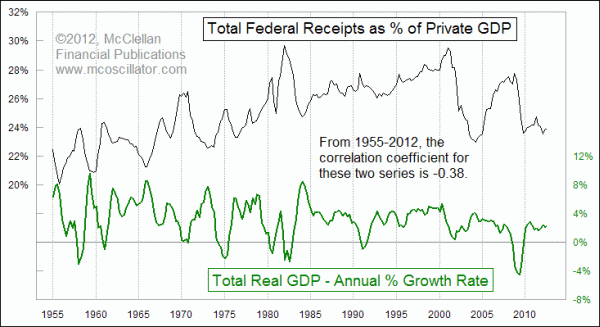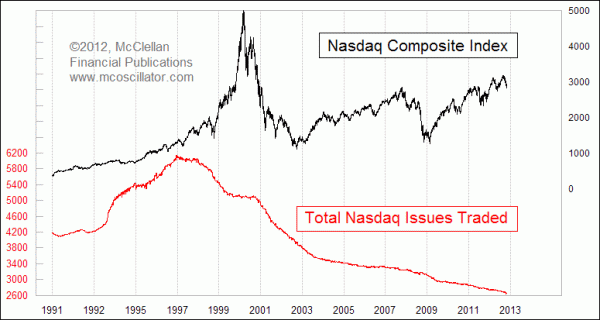
In the 1955 movie Rebel Without a Cause, the lead character Jim Stark (James Dean) gets involved in a "Chickie Run", in which teenaged boys with more testosterone than brains race stolen cars toward a cliff. The idea is to jump out of the car just before it goes flying off the cliff, and whoever jumps out first is deemed to be the "chicken" (coward), and subjected to the derision of his peers. That scene ends badly for one of the characters whose jacket gets caught on the door handle preventing him from jumping out.
Congress is now fully involved with its own Chickie Run, racing toward the Dec. 31 deadline that the press has dubbed "The Fiscal Cliff", after which mandatory cuts in certain military programs and other spending items will take effect unless Congress and the President act to strike a deal to close the budget deficit. Some of the players seem intent on getting the other side to jump first, evidently favoring the political victory that they think they would get more than any actual solution to the problem. Others are voicing the opinion that actually going over the cliff, and letting everyone see the effects of the mandatory tax hikes and spending cuts, would actually be a good thing. That's about like Jim Stark concluding that it is better to be dead in a car wreck than to be considered a "chicken".
Over the past 12 months, total federal receipts have amounted to 15.4% of GDP, while total expenditures have been 22.7%. That's clearly a huge gap, that is going to need some bold action to get those numbers to come back together. Proponents of big government programs insist that revenues must be increased (AKA tax rates must go up), because they don't want to shrink that expenditures number. On the other side, a favorite slogan is that "we don't have a revenue problem, we have a spending problem".
This week's chart offers us some evidence in support of the idea that more revenues from higher tax rates won't actually help. It shows a comparison between total federal receipts as a percentage of private GDP (factoring out government spending from the GDP numbers) versus real GDP growth. There is a fairly strong inverse correlation between the two, which means that if federal receipts go up (as a fraction of GDP), then GDP growth goes down.
Let me say that again, just for emphasis: raising tax receipts (as a percentage of private GDP) is associated with slower or even negative real GDP growth.
There was one period when that inverse correlation did not really work, and that was during the 1990s when President Clinton was in office, and when higher tax rates and total receipts did not seem to hurt the economy. That point has led some pundits to take the myopic view that we just need to go back to Clinton's tax rate policies and everything will be fine.
The problem with that logic is that President Clinton's tax rates were not the only factor affecting the economy during the 1990s. Clinton rode a huge technology boom, that not only increased economic productivity but also led to huge investments in startup companies. That decade also saw the Baby Boom generation in its peak entrepreneurial years, whereas now those aging Boomers are starting to slide into retirement rather than starting new companies.
Furthermore, the corrosive effects of having federal tax receipts up too high really was being felt in the 1990s, even if it did not show up in the GDP numbers. The total number of issues listed on the Nasdaq actually peaked all the way back in December 1996, more than 3 years ahead of the final price high for the Nasdaq Comp.

What was happening at the end of the 1990s is that the tax bite was so high that it put a real drag on the economy, stifling the innovation and business building efforts that had been in effect during the early 1990s. Putting the brakes on the economy by having taxes up too high took too much money out of the real economy, and pushed the economy in the recession which was finally evident starting in early 2000.
Turning back to the lead chart above, the inverse correlation between federal receipts and GDP growth was restored beginning in about 2001, and it remains in effect now. So if someone proposes that the total federal receipts line should be bent upward by increasing the tax bite, then it is reasonable to conclude that the real GDP growth rate line would see itself bent downward in response. In other words, the Congressional Budget Office was correct in its admonition that higher tax rates (from the expiration of the Bush era tax cuts) would push the U.S. economy into a recession once again.
For our roles as investors, we have to be ready for whatever Congress does. The proof offered here that raising tax receipts would be a bad idea is not sufficient to keep Congress from going ahead with it. Then again, having a Chickie Run in stolen cars is a bad idea, but having something be a bad idea is often not enough of an impediment to keep some people from proceeding with it.
For more about "private GDP", see my October 2011 Special Report, "It's the PRIVATE Economy That Matters".
Tom McClellan
Editor, The McClellan Market Report
Editor, The McClellan Market Report
No comments:
Post a Comment